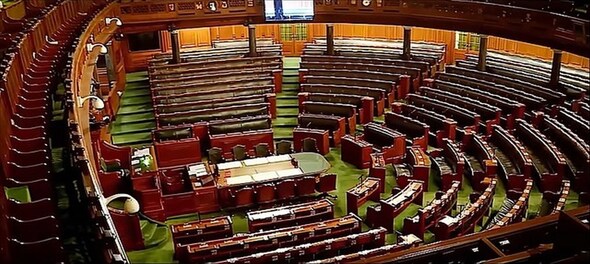
India’s new Parliament building has a seating capacity of 888 members in the Lok Sabha chamber. Currently, India has only 543 constituencies. Looking at the vacant seats, the opposition parties are worried that the government, led by Bharatiya Janata Party (BJP), may increase the number of Lok Sabha constituencies through a process called delimitation. If it does take place, it would be the first one in nearly half a century.
What is delimitation and why is it important?
Delimitation is the process of redrawing boundaries of parliamentary or assembly constituencies. The idea is to allot seats, in other words have representatives, based on the population. Ideally, each representative — a member of the Parliament or the state legislature — is supposed to represent an equal number of the population in the house. To achieve this, the Constitution requires that the delimitation is done after a Census (an official count of a population arrived at through a survey).
However, the census that was due in 2021 was delayed, at first due to the COVID-19 pandemic, and the Narendra Modi government hasn’t embarked on it yet, and has been criticised by its rival political parties for dragging its feet on this.
The delimitation was first done in 1952 following the 1951 census wherein 494 Lok Sabha seats were allotted. The next one came in 1963 following the reorganisation of states in 1956, which saw the number of Lok Sabha seats go up to 522. The third and last one in 1973 raised the number to 543, which remains till this day.
After the delimitation in 1972-73, the process had been suspended twice for 25 years in 1976 and in 2001. A delimitation exercise undertaken in 2001 did redraw the borders of several constituencies in order to bring about a certain amount of equality in population in each constituency. However, the number of constituencies that each state had did not change. The constituency borders have been frozen since then until the first census after 2026, or at least until after 2031.
The suspension came about after it was argued that the population in certain states continued to grow as against others which declined. The suspension was done to allow states with higher fertility rates to bring down their rates as per the population control measures introduced by the Centre.
However, there are still apprehensions that despite all these years, these states would have a comparatively higher population, and therefore, this would result in a higher number of seats for them.
A 2019 paper by Milan Vaishnav and Jamie Hintson from American think tank Carnegie Endowment for International Peace had projected the total number of Lok Sabha seats to go up to 846 in 2026, based on population projections for that year. As per this estimate, Uttar Pradesh would see its constituencies go up to 143 from the current 80 and Bihar’s would nearly double to 79 from 40.
On the other hand, southern states such as Kerala and Tamil Nadu would lose 16 seats, according to the paper.
The politics behind delimitation and its opposition
Leaders of southern states have raised this fear, stating that the northern states whose population growth rates have been higher than theirs would go on to benefit from a delimitation exercise whereas southern states which have followed the Centre’s norms on population control would be penalised.
KT Rama Rao, IT Minister of Telangana and working president of the state’s ruling party BRS, has called all leaders of political parties of southern states to join the fight against the delimitation as these states comprising 18 percent of the country’s population contribute 35 percent of the GDP. With delimitation, these states would be put to disadvantage.
Politically, it would mean that a party could win a simple majority in the general elections by winning just the seats in northern states. This could lead to further ignoring of southern states in measures and funding. Lower representation in the Lok Sabha would mean more power to representatives of northern states on decisions put to vote in the house.
Check out our in-depth Market Coverage, Business News & get real-time Stock Market Updates on CNBC-TV18. Also, Watch our channels CNBC-TV18, CNBC Awaaz and CNBC Bajar Live on-the-go!


Andhra Pradesh Lok Sabha elections: A look at YSRCP candidates
Apr 25, 2024 6:54 PM
Lok Sabha elections 2024: Banks and schools to remain closed in these cities for phase 2 voting
Apr 25, 2024 5:33 PM
Andhra Pradesh Lok Sabha elections: Seats, schedule, NDA candidates and more
Apr 25, 2024 5:16 PM

